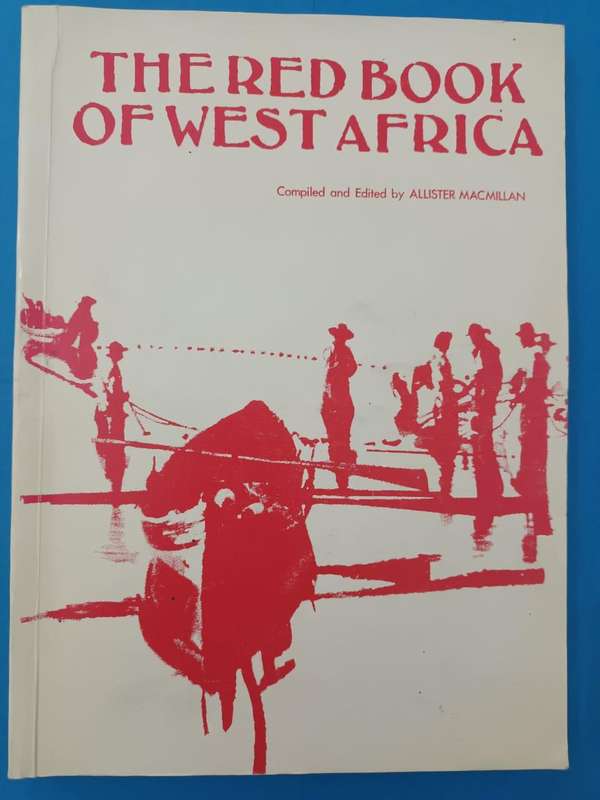
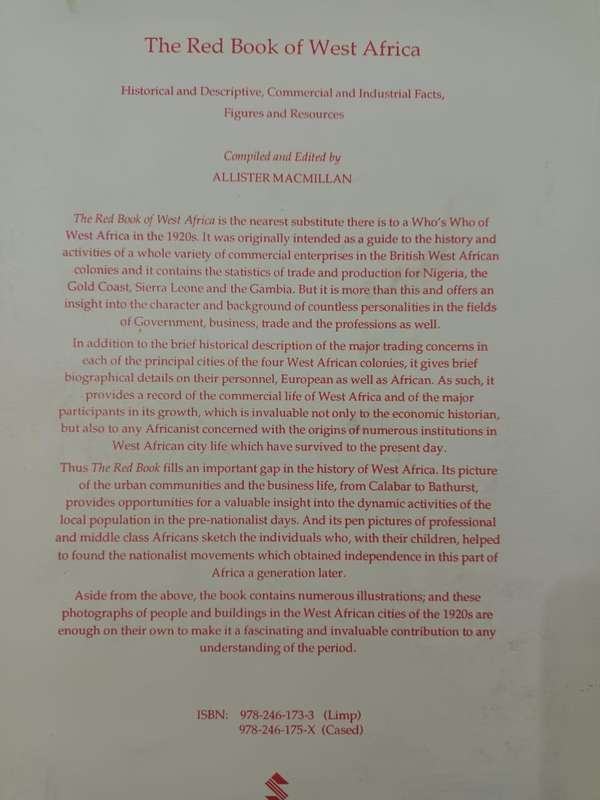
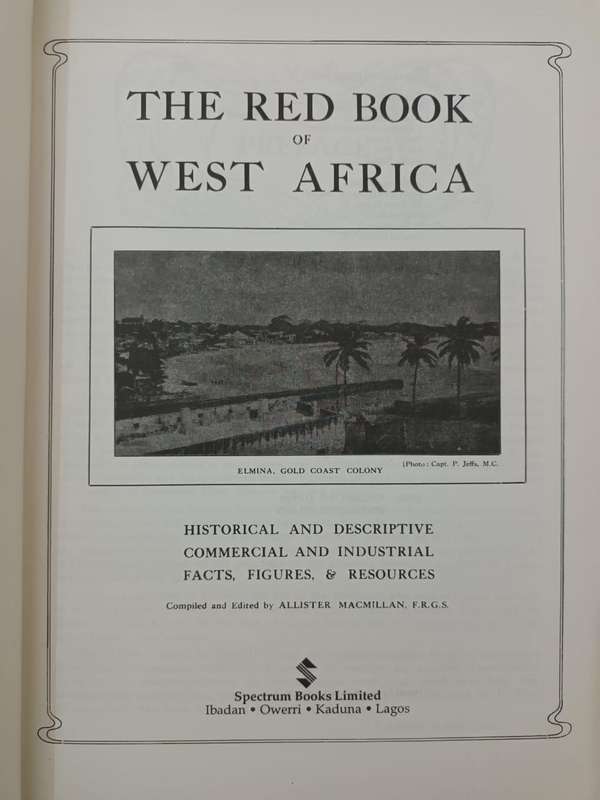
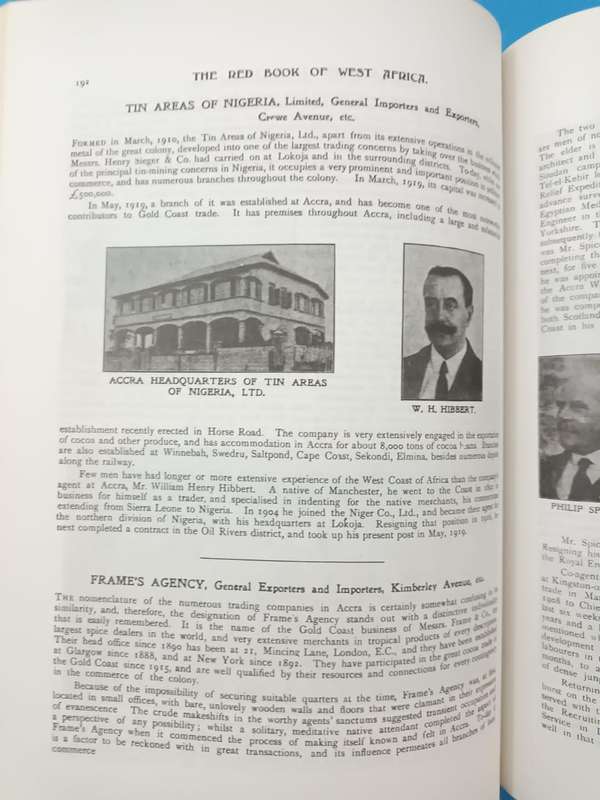
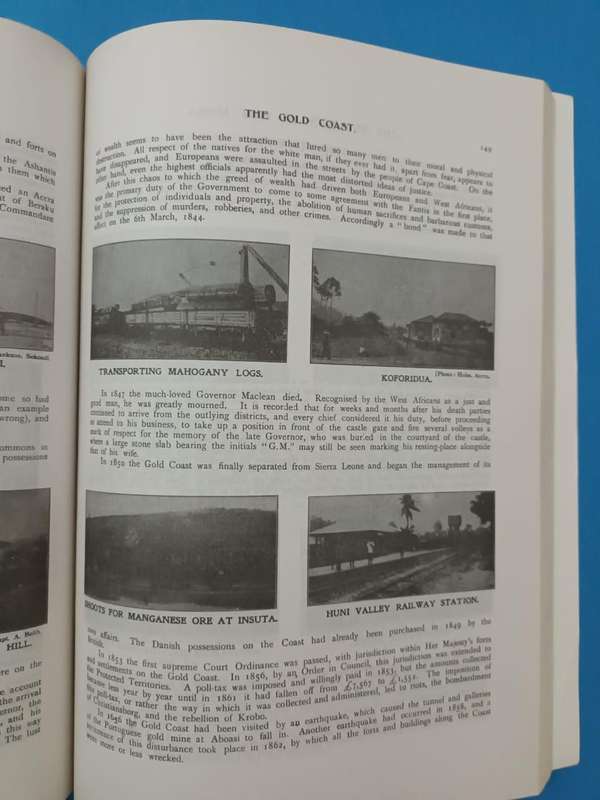
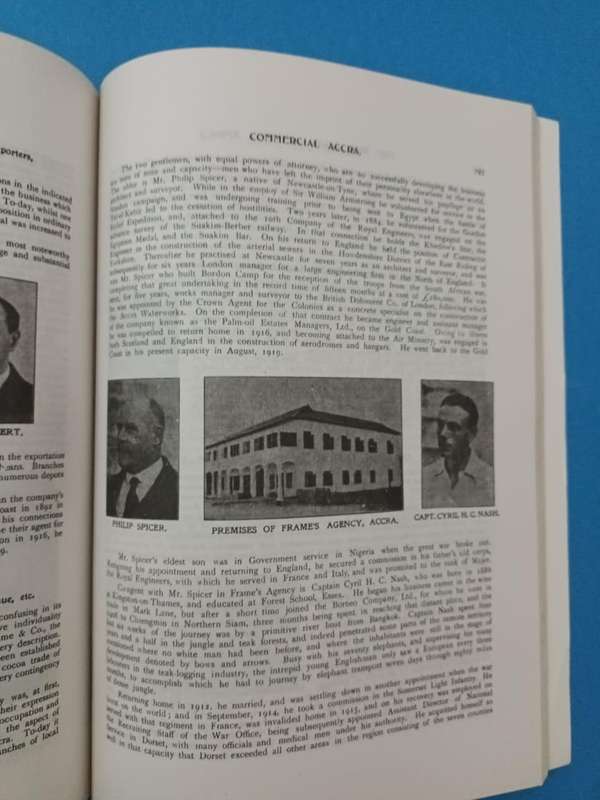
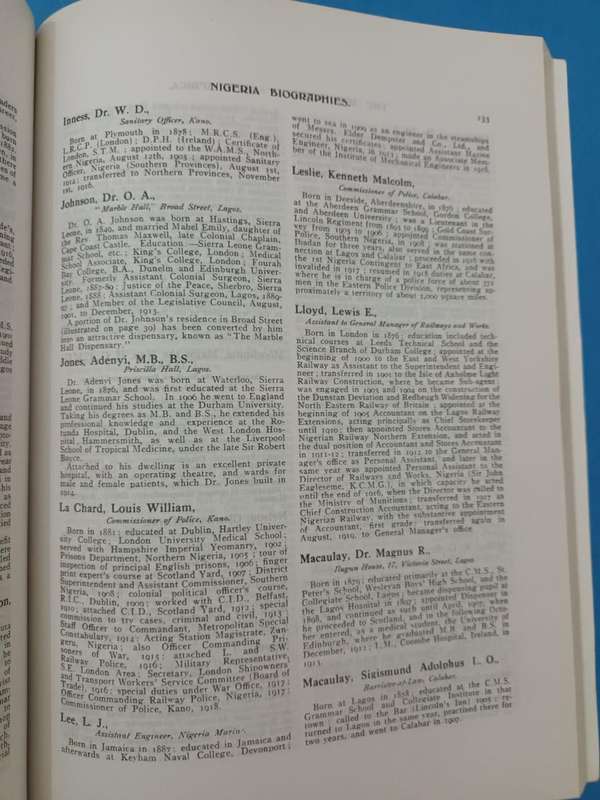
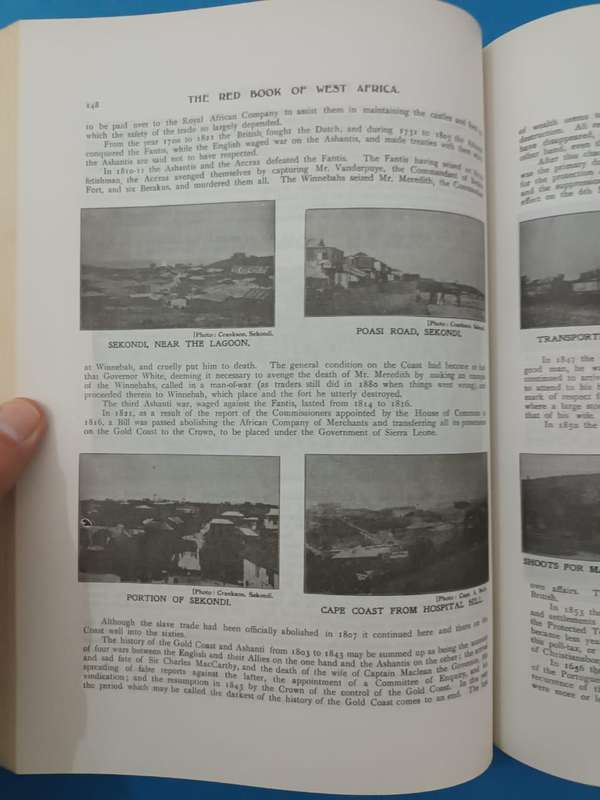
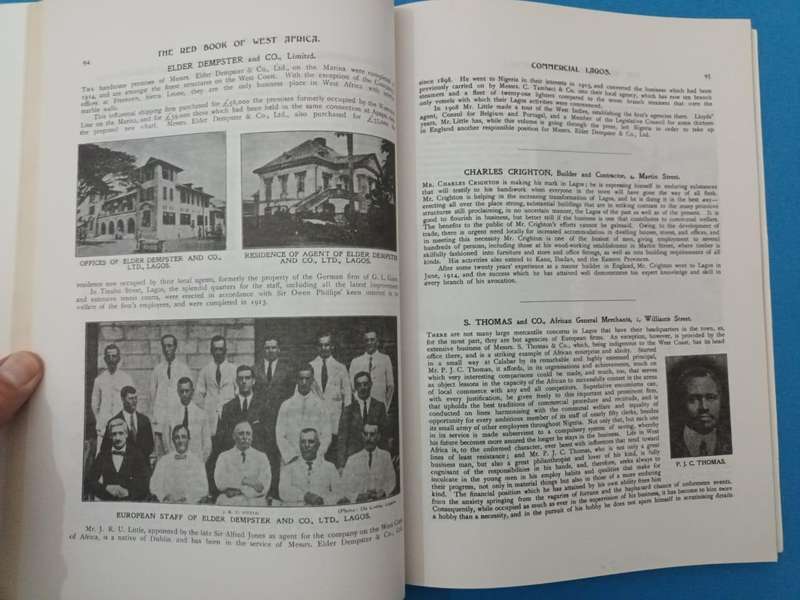
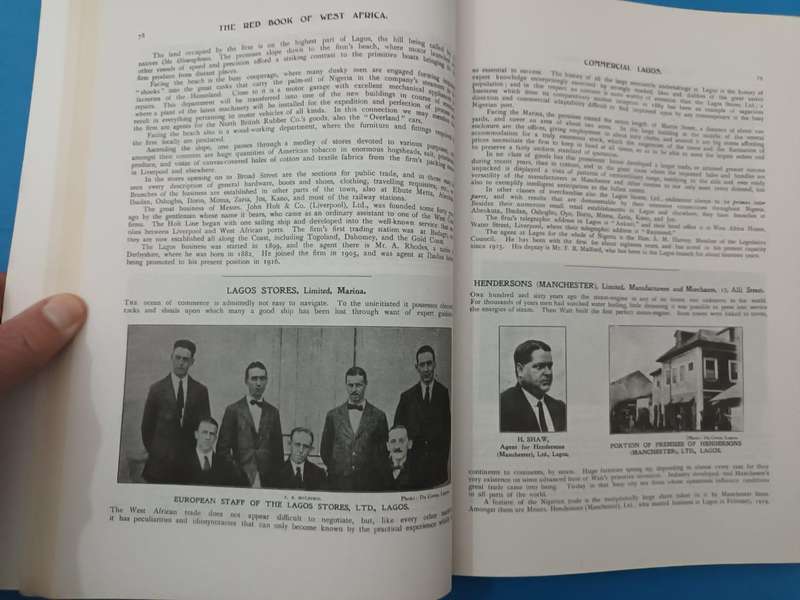
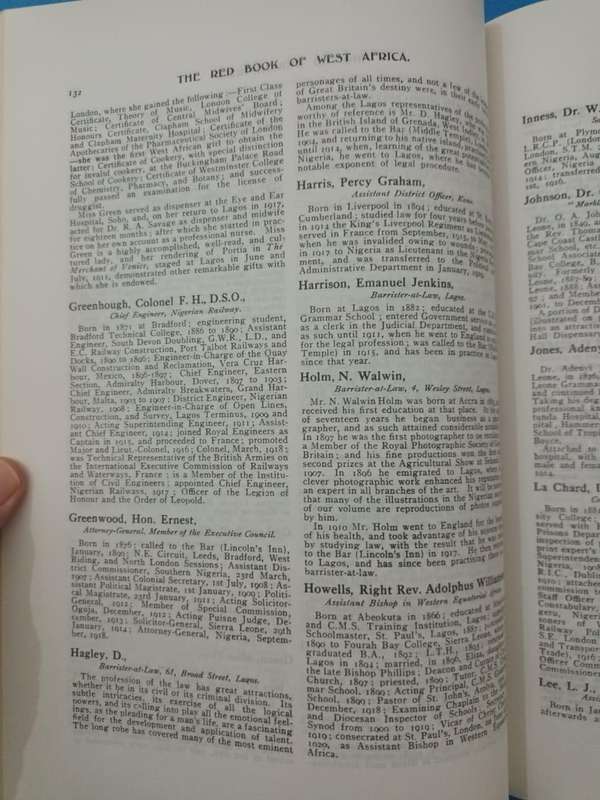





The Red Book of West Africa (Who's Who of Nigeria, the Gold Coast, Sierra Leone and the Gambia 1920)
Check my rate
| Main centres: | 1-3 business days |
| Regional areas: | 3-4 business days |
| Remote areas: | 3-5 business days |
















| Main centres: | 1-3 business days |
| Regional areas: | 3-4 business days |
| Remote areas: | 3-5 business days |
Allister Macmillan (compiler/editor), The Red Book of West Africa: Historical and Descriptive; Commercial and Industrial; Facts, Figures & Resources. Ibadan, etc.: Spectrum, 1993.
Paperback, 28.5 x 20.5 cm, 312 pages, illustrated.
Slight creasing to the wraps. Very good, clean condition.
Facsimile reprint of the rare, original edition (Frank Cass, 1920). When it was first published, The Red Book claimed it was "the first of its kind ever issued on West Africa, also the most profusely illustrated."
'The Red Book of West Africa is the nearest substitute there is to a Who's Who of West Africa in the 1920s. It was originally intended as a guide to the history and activities of a whole variety of commercial enterprises in the British West African colonies and it contains the statistics of trade and production for Nigeria, the Gold Coast, Sierra Leone and the Gambia. But it is more than this and offers an insight into the character and background of countless personalities in the fields of Government, business, trade and the professions as well.
'In addition to the brief historical description of the major trading concerns in each of the principal cities of the four West African colonies, it gives brief biographical details on their personnel, European as well as African. As such, it provides a record of the commercial life of West Africa and of the major participants in its growth, which is invaluable not only to the economic historian, but also to any Africanist concerned with the origins of numerous institutions in West African city life which have survived to the present day.
Thus The Red Book fills an important gap in the history of West Africa. Its picture of the urban communities and the business life, from Calabar to Bathurst, provides opportunities for a valuable insight into the dynamic activities of the local population in the pre-nationalist days. And its pen pictures of professional and middle class Africans sketch the individuals who, with their children, helped to found the nationalist movements which obtained independence in this part of Africa a generation later. Aside from the above, the book contains numerous illustrations; and these photographs of people and buildings in the West African cities of the 1920s are enough on their own to make it a fascinating and invaluable contribution to any understanding of the period.'
Allister Macmillan produced similar biographical registers and introductions to places in many parts of the world.